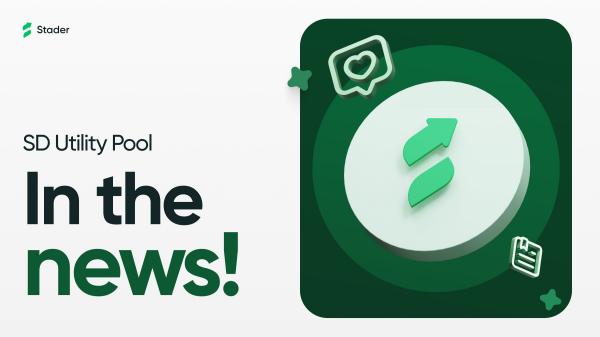
SD is the native token of the Stader ecosystem. Stader is a platform that brings together all types of equity solutions, covering traditional equity, liquid equity, derivatives and other methods to help users discover and choose the best equity opportunities. Its modular smart contract design allows third parties to leverage its components and integrate customized solutions, thereby improving the flexibility and scalability of the platform.
Currently, Stader has been launched on Terra and is being built on Solana. In the future, it plans to build an API to provide end-to-end equity solutions for trading platforms and mainstream fintech applications.
Financing Background
Stader completed a $4 million seed round of financing on October 7 last year, led by Pantera in the United States. Other participating institutions include well-known institutions and ecological foundations such as Coinbase, Solana, and NEAR. These strong capital backgrounds provide solid support for the development of Stader.
Team Introduction
Stader's team brings together many senior technicians in the blockchain field, including CEO and co-founder Amitej, CTO and co-founder Sidhartha and other traditional technicians. Their rich experience and expertise lay the foundation for the success of the Stader project.
Token Information
The total supply of SD tokens is 150 million, which are allocated as follows:
Rewards and Farming: 36%
Public Sale: 4%
Team and Advisors: 17%
Ecosystem Fund: 11%
DAO Fund: 15%
Private Sale: 17%
SD tokens are designed to promote the development and R&D of the project and ensure the long-term sustainability of the Stader ecosystem.
Project Application
Stader is building native smart contracts across multiple blockchains (including Terra, Solana, Ethereum, Fantom, Hedera, Polygon) and establishing an economic ecosystem to develop solutions. These solutions include revenue redirection with rewards, liquid staking, launchpads, games, etc., providing users with diversified equity options.
Project Advantages
Growing Network Participation:
Stader has launched two staking products on Terra: Simplified Staking (Stake Pools) and Liquid Staking (LunaX). Since launching on November 23, 2021, these solutions have achieved significant results in Terra's DeFi ecosystem.
More than 14,000 unique wallets have participated in staking.
Total staked reached 5.5 million Luna.
There are approximately 1.1 million Luna in the LunaX <> Luna liquidity pool.
Community size exceeds 35,000 people.
Flexible Architecture:
Stader's architecture allows for flexible growth and integration of new features as staking technology evolves. Its scalability is reflected in a highly interactive smart contract system, and incorporating new strategies or product features only requires minor changes to specific independent contracts.
SD Token Utility
The SD token has multiple core utilities in the Stader ecosystem, including:
Preferential delegation
Slashing insurance
Rewards and discounts
Governance
Access to development tools for Stader infrastructure
Through these utilities, the SD token provides users with multiple ways to capture value in the Stader ecosystem and incentivizes them to actively participate in the governance and development of the platform.
In summary:the SD token not only plays a key role in the Stader ecosystem, but also provides holders with diversified benefits and participation opportunities. As the Stader platform continues to develop, the prospects and value of the SD token will continue to grow and become an indispensable part of the blockchain field.